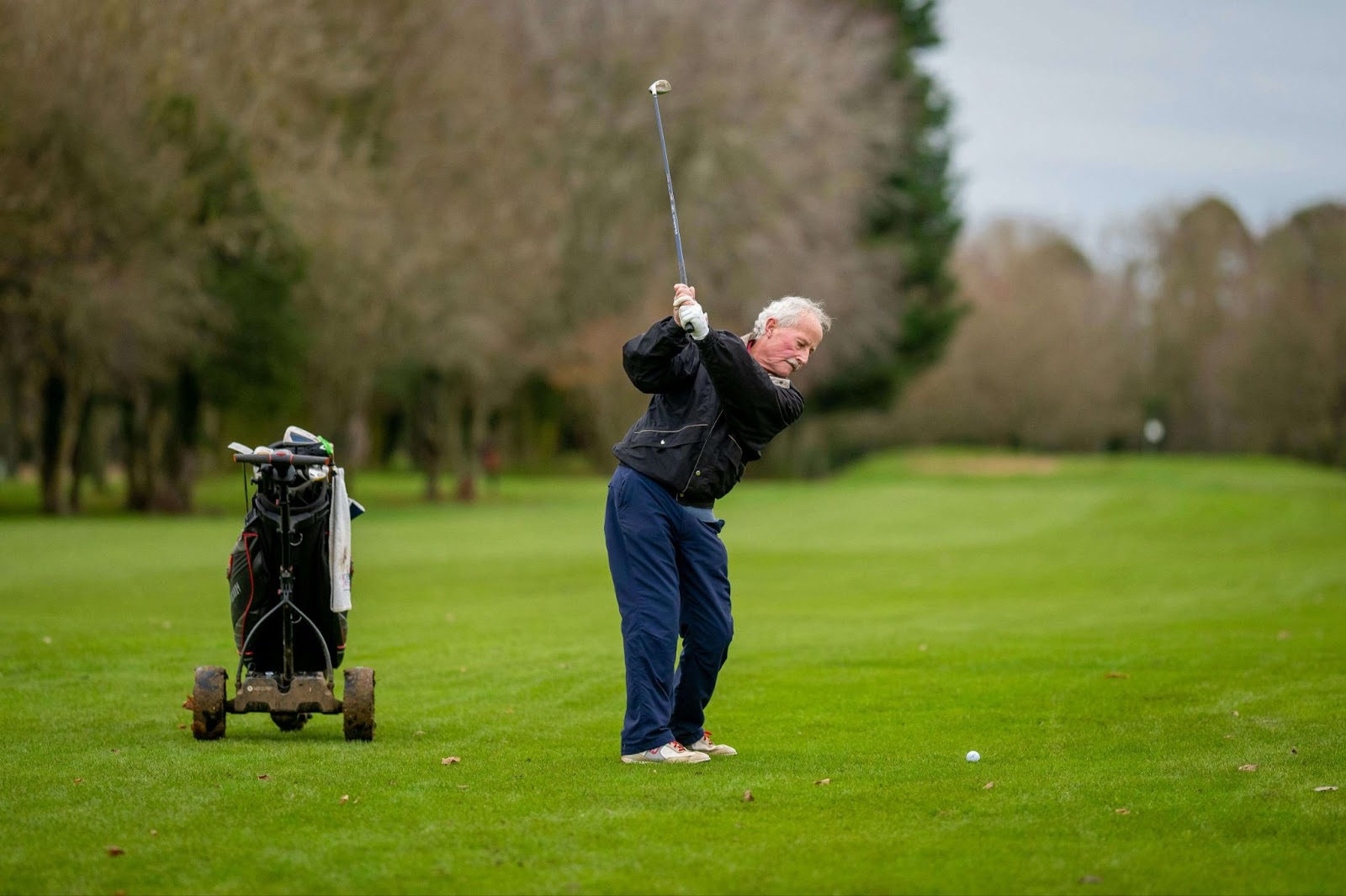
Introduction to the Golf Swing Plane
In the world of golf, few topics generate as much discussion and debate as the swing plane.
Understanding the swing plane is crucial for every golfer aiming to enhance their game. Essentially, the swing plane refers to the path that the golf club travels around the golfer’s body during a swing. It’s the invisible flat surface or angle through which the club moves from backswing to downswing.
This guide will help you understand the intricacies of the swing plane, highlighting the differences between the one-plane and two-plane swings, and providing insights on how each can be adapted to suit individual body types and physical capabilities.
One-Plane vs. Two-Plane Golf Swing
What is a One-Plane Swing?
The one-plane swing is characterized by a single, flat swing plane where the golfer’s arms and club shaft align and remain on the same plane throughout the swing. This method is praised for its simplicity and consistency, making it an attractive option for players seeking reliability in their shots. Golfers like Matt Kuchar exemplify the one-plane swing, maintaining a consistent path of the hands and club closely aligned with the initial setup angle.
What is a Two-Plane Swing?
Contrasting the one-plane, the two-plane swing involves the golfer’s arms and club moving on different planes. The arms may lift higher than the shaft plane set at address, creating a steeper angle. This method often leads to more powerful shots due to the greater leverage and dynamic motion created. Golfers like Geoff Ogilvy utilize this technique, allowing their hands and club to reach a higher position at the top of the swing, which is distinctly different from the setup plane.
Choosing Between One-Plane and Two-Plane Swings
Selecting the right swing plane often depends on a player’s physical attributes and personal comfort. Factors such as flexibility, strength, and the natural movement of the body play significant roles. For instance, golfers with limited flexibility may find the one-plane swing easier to manage and more consistent, whereas those with greater physical strength and flexibility might prefer the dynamic nature of the two-plane swing for its power potential.
Studying Your Swing with Gears Golf
Golf is a sport where technical skills and the right equipment go hand in hand. Rigorous practice is essential, but the real key to perfecting your game lies in how you understand and analyze your technique. This is where Gears Golf steps in, revolutionizing golf coaching with the world’s most advanced and precise swing motion capture technology.
The Gears system offers more than just data collection—it provides actionable insights that are immediately applicable to your game. Imagine having a 3D rendering of your swing, allowing you to compare it side by side with the techniques of professionals. This level of clarity and detailed analysis empowers you to make informed adjustments to your technique, ensuring that your practice sessions are as productive as possible.
PS – did you see that Steph Curry used Gears to measure his golf swing biomechanics? He loved it.
Driver Swing vs. Iron Swing: Adjusting Your Attack
Driver Swing Mechanics
The driver swing is distinct due to the ball’s positioning on a tee, which ideally should be hit with an upward strike. The key here is to create a positive angle of attack, allowing for maximum loft and distance. This requires the ball to be positioned forward in the stance, aligning it with the inside of the lead foot to facilitate a sweeping upward motion.
Iron Swing Mechanics
In contrast, the iron swing demands a downward strike to capitalize on the club’s loft and design. The ball position varies slightly with each iron but generally remains closer to the center of the stance, promoting a steeper angle of attack. This helps achieve a clean strike on the ball first, followed by the turf, which is essential for effective ball lifting.
Practical Tips for Determining Your Swing Plane
Video Analysis
One of the most effective ways to understand your swing plane is through video analysis. By recording your swing from behind along the target line, you can observe the club’s path relative to your setup. This analysis helps identify whether you naturally favor a one-plane or two-plane swing and guides adjustments for better alignment and results.
Physical Assessments
Conducting simple physical tests can also determine your suitability for different swing types. For example, testing the flexibility of your hamstrings and shoulders can indicate how comfortably you can maintain a one-plane swing. Similarly, assessing core strength helps determine your ability to sustain posture and power through a two-plane swing.
Customizing Your Swing for Optimal Performance
Ultimately, the choice between a one-plane and two-plane swing depends on personal preference, physical ability, and golfing goals. Both swing types have their advantages—consistency and simplicity for the one-plane, power and dynamism for the two-plane. By understanding these fundamentals and assessing your physical capabilities, you can tailor your swing to enhance both your enjoyment and performance on the course.
As you continue to explore the complexities of golf swing planes, remember that practice, patience, and persistence are key. Whether adjusting your driver or iron swings, focus on mastering the basics and aligning your physical movements with your chosen swing plane for the best results. Happy golfing!



